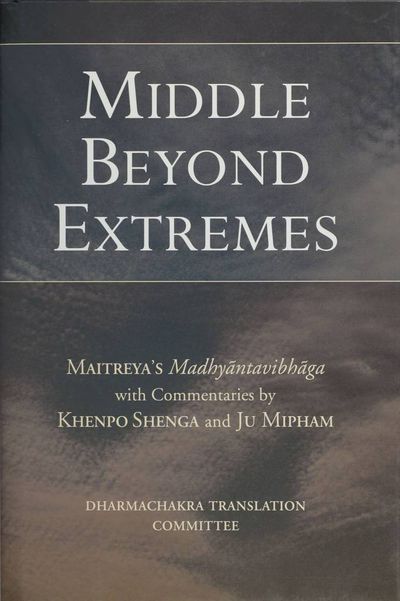No edit summary |
No edit summary |
||
| (2 intermediate revisions by 2 users not shown) | |||
| Line 9: | Line 9: | ||
|PersonPage=gzhan phan chos kyi snang ba | |PersonPage=gzhan phan chos kyi snang ba | ||
|PersonName=Zhenpen Chökyi Nangwa | |PersonName=Zhenpen Chökyi Nangwa | ||
}}{{Book-person | |||
|PersonPage=Dharmachakra Translation Committee | |||
|PersonName=Dharmachakra Translation Committee | |||
}} | }} | ||
|FullTextRead=No | |FullTextRead=No | ||
| Line 22: | Line 25: | ||
** {{i|General Presentation |47}} | ** {{i|General Presentation |47}} | ||
** {{i|Detailed Explanation |49}} | ** {{i|Detailed Explanation |49}} | ||
*** {{i|Obscurations That Prevent Liberation |49}} | |||
*** {{i| Obscurations That Inhibit the Ten Qualities |51}} | *** {{i| Obscurations That Inhibit the Ten Qualities |51}} | ||
*** {{i| Obscurations That Inhibit the Three Remedies |59}} | *** {{i| Obscurations That Inhibit the Three Remedies |59}} | ||
| Line 29: | Line 32: | ||
** {{i|Brief Presentation |69}} | ** {{i|Brief Presentation |69}} | ||
** {{i|Detailed Explanation |70}} | ** {{i|Detailed Explanation |70}} | ||
*** {{i|The Reality of the Three Essential Natures |70}} | |||
*** {{i| The Eight Principles |73}} | *** {{i| The Eight Principles |73}} | ||
*** {{i| The Ten Topics of Knowledge |84}} | *** {{i| The Ten Topics of Knowledge |84}} | ||
| Line 41: | Line 44: | ||
*** {{i| Directing the Mind |129}} | *** {{i| Directing the Mind |129}} | ||
*** {{i| Concordant Factors |133}} | *** {{i| Concordant Factors |133}} | ||
*** {{i|Eliminating Dualistic Extremes |148}} | |||
*** {{i| The Specific and the General |154}} | *** {{i| The Specific and the General |154}} | ||
** {{i|Unsurpassable Observation |155}} | ** {{i|Unsurpassable Observation |155}} | ||
| Line 47: | Line 50: | ||
* {{i|Conclusion |161}} | * {{i|Conclusion |161}} | ||
* {{i|Visual representation of Ju Mipham’s outline |166}} | * {{i|Visual representation of Ju Mipham’s outline |166}} | ||
* {{i|Appendix: Ju Mipham’s Topical Outline of Distinguishing the Middle from Extremes |167}} | * {{i|Appendix: Ju Mipham’s Topical Outline of Distinguishing the<br>Middle from Extremes |167}} | ||
* {{i|Notes |173}} | * {{i|Notes |173}} | ||
* {{i|English-Tibetan Glossary |179}} | * {{i|English-Tibetan Glossary |179}} | ||
Latest revision as of 12:07, 12 November 2020
Middle Beyond Extremes contains a translation of the Buddhist masterpiece Distinguishing the Middle from Extremes. This famed text, often referred to by its Sanskrit title, Madhyāntavibhāga, is part of a collection known as the Five Maitreya Teachings. Maitreya, the Buddha’s regent, is held to have entrusted these profound and vast instructions to the master Asaṅga in the heavenly realm of Tuṣita.
In pithy verses, Distinguishing the Middle from Extremes employs the principle of the three natures to explain the way things seem to be as well as the way they actually are. Unraveling the subtle processes that condition our thinking and experience, Maitreya’s teaching reveals a powerful path of compassionate vision and spiritual transformation.
Distinguishing the Middle from Extremes is presented here alongside commentaries by two outstanding masters of Tibet’s nonsectarian Rimé movement, Khenpo Shenga and Ju Mipham. (Source: Shambhala Publications)
| Citation | Dharmachakra Translation Committee, trans. Middle Beyond Extremes: Maitreya's Madhyāntavibhāga with Commentaries by Khenpo Shenga (gzhan phan chos kyi snang ba) and Ju Mipham ('ju mi pham rgya mtsho). Ithaca, NY: Snow Lion Publications, 2006. |
|---|---|



